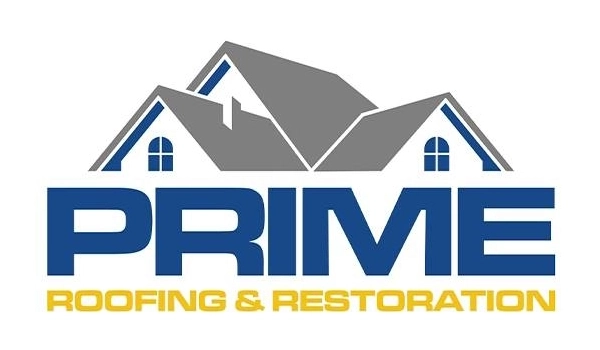Alabama is no stranger to severe storms, and hail is among the most destructive weather events for roofs. While hail damage isn’t always immediately visible, its long-term effects can be serious and costly if not addressed promptly. Whether you’re in Alabaster, Pelham, or Hoover, understanding how to spot roof hail damage can protect your investment and your family’s safety. As a trusted roof company in Alabaster, AL, Prime Roofing & Restoration helps homeowners take proactive steps in identifying and resolving hail damage. Here’s what you need to know.
What Is Roof Hail Damage—and Why Does It Matter?
Hail damage occurs when chunks of ice, ranging in size from pea-sized pellets to golf balls or larger, strike your roofing materials with significant force. This can compromise the protective layers of your roof, leaving it vulnerable to water infiltration, mold, and premature aging.
It’s important to remember that hail doesn’t need to crack a shingle in half to cause lasting damage. Even subtle bruises or displaced granules can be the starting point for roof leaks and long-term deterioration.
According to the Insurance Information Institute, hailstorms caused over $21 billion in property losses across the U.S. in a recent year alone (source)—with roofs taking the bulk of the damage.
Common Signs of Hail Damage on a Roof
Spotting hail damage requires a trained eye, but here are the most common warning signs homeowners should look out for:
1. Discolored or Missing Shingle Granules
If you see dark or shiny patches on your shingles, that’s a sign granules have been knocked off. Granules protect shingles from UV rays and weather damage. Their absence means your roof is aging faster than it should.
2. Dented or Cracked Shingles
Impact from hail can leave visible dents or cause shingles to crack. This kind of damage weakens your roof’s ability to shed water, increasing the risk of leaks.
3. Soft Spots or Bruising
Run your hand over your shingles (or have a pro do it). If a shingle feels soft or spongy in certain areas, the impact has compromised the integrity of the matting underneath.
4. Damage to Roof Fixtures
Check vents, flashing, chimney caps, and skylight frames. Hail can leave dents or chips in these metal components—strong indicators that your shingles likely took a hit too.
Why Ignoring Hail Damage Is a Costly Mistake
Hail damage may not always cause immediate leaks, but the risk compounds over time. Compromised shingles allow moisture to seep in, leading to:
- Mold and mildew growth in the attic
- Wood rot in decking or structural beams
- Interior water stains and drywall damage
- Insulation inefficiency and rising energy bills
By delaying repairs, you also run the risk of voiding your roof’s manufacturer warranty or having your insurance claim denied due to lack of timely reporting.
How to Inspect for Hail Damage (Without Climbing on the Roof)
You don’t need to scale your roof to get an idea of potential hail damage. Here’s how to do a safe and effective preliminary roof inspection:
- Walk the perimeter of your home. Look for signs of damage to gutters, siding, and downspouts.
Use binoculars. Scan the roof for dark spots, missing granules, or curled shingles. - Check your attic. Water stains or a musty smell may indicate leaks from hail-compromised areas.
- Look at the surrounding properties. If your neighbors are having their roofs repaired or replaced, there’s a good chance yours needs attention too.
How Different Roofing Materials React to Hail
Each type of roofing material responds differently to hail impacts. For example:
- Asphalt shingles will show bruising and granule loss.
- Metal roofing may dent but typically resists cracking.
- Wood shakes can split or fracture from hail impacts.
- Tile roofing is prone to chipping or breakage upon impact.
No matter your roofing material, prompt roof inspection is essential to assess the extent of damage and recommend the appropriate fix.
What to Do After a Hailstorm Hits
If your area experiences a hailstorm, follow these steps immediately:
- Document the damage. Take photos of your roof, gutters, siding, and surrounding property.
- Schedule a professional inspection. At Prime Roofing, we provide comprehensive post-storm inspections to assess all damage.
- Initiate your insurance claim. We help guide you through the process with insurance roof replacement.
- Take preventative measures. If damage is significant, we can provide roof tarping services to prevent further water intrusion.
Why Choose Prime Roofing & Restoration for Hail Damage Repairs?
Based in Alabaster and serving homeowners across Central Alabama—including Chelsea, Helena, and Montevallo—we’re the trusted name for storm damage recovery.
Here’s what sets us apart:
- Expert hail damage detection
- Full-spectrum services from roof repair to roof replacement
- Emergency response for storm damage
- Experienced with all major insurance providers
- Licensed and insured professionals trained in Alabama building codes
We understand the urgency that follows a hailstorm, and we deliver fast, reliable results backed by quality craftsmanship.
Final Thoughts: Don’t Wait Until It Leaks
Hail damage isn’t always obvious, but its consequences can be severe. Regular inspections, especially after storms, are key to maintaining your roof’s performance and avoiding expensive surprises.
If you suspect hail damage, call (205) 661-8190 or schedule an inspection online. Let Prime Roofing & Restoration help you stay one step ahead of the storm.



